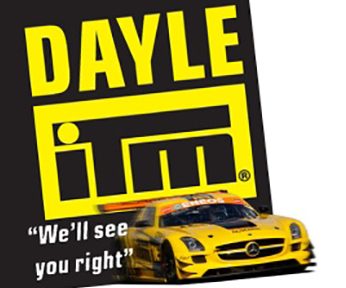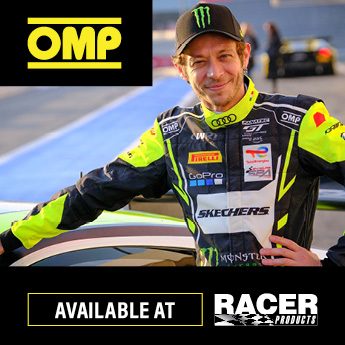Brazilian veteran Helio Castroneves has won his fourth Indy 500 in a stunning upset, the veteran and his Meyer Shank Racing upstaging the young next-generation after Castroneves was outed from Penske Racing.
Castroneves’ main challenger throughout was Ganassi Racing’s Alex Palau and Arrow McLaren SP’s Pato O’Ward. Castroneves and Palau in particular fought hard in the final few stints, trading the lead constantly as each tried to time their run just right. In the end, the race was decided in traffic as the leaders joined a train of lapped runners on the final lap.
For Kiwis Scott Dixon and Scott McLaughlin it was a race to forget. Both drivers showed plenty of pace and promise, running as high as first and eighth on corrected at one point. But, pit-lane dramas ruined each driver’s chances of a strong result. In the end Dixon limped to 17th, and McLaughlin 20th.
Dixon slipped to third for the bulk of the opening phase of the race, with Rinus Veekay and Colton Herta assuming the top two spots. The opening stanza was relatively sedate compared to recent Indy 500 events. McLaughlin had a relatively uneventful opening 25 laps, too, holding station in 16th … one spot up on his qualifying position.
Veekay peeled out of the lead to trigger the first wave of pit-stops on lap 32. A flurry of others stopped on the next lap, with one slightly dramatic pit stop for Ed Carpenter (the former 500 pole-sitter falling off his jacks prematurely) with a much more dramatic stop unfolding a lap later for British ace Stefan Wilson. The recent returnee locked up his tyres at pit entry, spinning into the outer wall at pit entry.
Wilson’s stricken car prompted the first safety car of the day, and forced those who had not yet stopped to sweat. Dixon was one of them, as was McLaughlin and a range of favourites. The concern was that they wouldn’t have enough fuel in the tank to complete the necessary laps under safety car while pit-lane was closed to tend to Wilson’s car. Sure enough, Dixon peeled off on lap 37 from the lead for some emergency fuel.
But the drama wasn’t over, Dixon’s car would not re-fire as other drivers with similar fuel problems processed their pit-stops and flew by the stationary Kiwi. Dixon was eventually able to move on, but not without losing a lap to the field but also with the need to make another pit-stop to get the fuel into the car the team had intended. Dixon, and Alexander Rossi who had almost exactly the same problem, wound up one lap behind the field.
When the race restarted on lap 46, Herta and Veekay led over a much improved Connor Daly and Helio Castroneves. McLaughlin was up to ninth, having successfully saved enough fuel to pit when pit-lane was open. The restart was chaotic, Castroneves making a wild jump to third (Daly getting him back on lap 49) while Veekay flirted with passing Herta.
With Neither Herta nor Veekay wanting to lead the race, due to the strain it does on fuel, Daly passed them both to grab the lead on lap 50. The situation at the front was unchanged until Veekay became the first major pit-stopper on lap 69. After packing a few extra laps in, Daly did the same on lap 72. The two ECR teammates appeared to have a big fuel economy disadvantage, as the rest of the field (now led by Castroneves) pressed on for longer before stopping).
A flurry of stops took place on laps 76 and 77. Herta stole the lead off Castroneves at the end of lap 77, only for both of them to peel off into pit-lane immediately afterwards. Veekay and Daly reassumed the lead over Herta, although they had a 5-lap deficit on fuel to work on. Once the remainder of the pit-stops were completed, Daly was back in the lead over Veekay, O’Ward, Hera, Hunter-Reay, Palau, and Castroneves. McLaughlin was down to 12th, after being muscled by teammate Josef Newgarden.
At the race’s halfway mark, Daly led over Veekay, O’Ward, Hunter-Reay, Herta, Palau, and Castroneves, with McLaughlin holding station just outside the top 10. This timing was seen as a positive for the duo’s economy for the remainder of the race, although Daly’s pit-stop was poor and cost him plenty of time. The remainder of the leaders stayed out for much longer. Herta was the next leader to stop on lap 110.
McLaughlin was among those to stop during the stop, very nearly crashing at entry after locking his rear tyres at entry and veering towards the inside wall. The Penske ace subsequently inherited a pit-lane penalty for the infraction, dropping up well down the order to 32nd. It was tough work down the grid, with Rossi and Dixon having struggled to make progress.
The next safety car came on lap 111, after Graham Rahal lost control of his car. The wall impact at turn two was significant, and happened right in front of the leaders. Palau, the leader at the time, luckily missed the errand car. The only other car to incur damage was Daly, having clouted a wheel that had bounced away from Rahal’s crashed Honda, pounding the wheel with his nose-cone. It was initially thought that Rahal had lost control on cold tyres, but replays showed that his left-rear tyre fell off on its own accord after a bungled pit-stop.
One driver who benefited from the subsequent safety car was Dixon. Although Rossi had made more progress up the field, poor timing meant that he had to stop under yellow. Dixon, able to press on, reclaimed the lead lap back. Although he was still buried in 26th. The race restarted on lap 126, with drama unfolding immediately as Castroneves sniped O’Ward to grab the lead. There were moves being made all over the field, with several near misses.
Once the order settled it was O’Ward out front over Palau, Castroneves, Veekay, and Newgarden. The Penske star had made his last stop much earlier than most, gaining a bunch of spots in the shuffle. ‘Settled’ was a stretch, somewhat, as spots continued to switch. Palau claimed the lead on lap 131, with Castroneves also getting by O’Ward on lap 132. Along with Newgarden there were other interesting names beginning to emerge. Simon Pagenaud had emerged in seventh, 19 spots up on where he had started. Juan-Pablo Montoya was also lingering on the edge of the top 10.
It was an intriguing time in the race. Those who couldn’t complete the race on one more pit-stop were having to show their hand and peel out of contention. Veekay was one of them, stopping on lap 146, joining the likes of Daly and Newgarden. Palau stopped from the lead on lap 149. Dixon was among a group who were hypermiling, hoping to make it to the end of the race on just one pit-stop.
Castroneves stopped on lap 150, with O’Ward stopping a lap later. Will Power also stopped during this time; the Aussie spinning his Verizon entry on pit-lane, ending a day of solid recovery on a sour note. These stops had shuffled Dixon up to sixth place with 46 laps to go, with his teammate Felix Rosenqvist the best placed of those attempting a long haul to the finish. With the first of Dixon’s ‘rebel’ group pitting with 43 laps to go, Dixon briefly once again held first place. Dixon pitted with 38 laps to go, with his engineers critically confirming that he can complete it with no more pit-stops and making him the first to complete his last.
Newgarden was on a strategy not entirely different to Dixon’s. He pitted with 31 laps to go, the added laps giving him more security of being able to complete the race without the need for additional fuel savings. Herta and Daly pitted in the following laps, while the leaders pressed on for another few laps. The battle for the lead ‘on corrected’ between Castroneves and Palau raged on, with pair swapping spots on either side of their final stop. With 20 laps to go, they were sixth and seventh as a selection of drivers ahead pressed on in hopes of a caution.
Dixon was 10th, but struggling as he tried to limp his car to the chequered flag without another pit-stop, slowly fading further and further. McLaughlin was playing an opposing card to Dixon, staying out long and mixing with the leaders, although he needed to make another pit-stop in the dying laps. With 15 laps to go, the stage was set; Palau leading Castroneves, O’Ward, Pagenaud, and Ed Carpenter. The nose-to-tail battle was for fourth, but everyone in front had to pit.
With 10 laps to go the leaders appeared to all be biding their time. Rosenqvist and Sato were committing at the front to the hope of a very late safety car helping them make it to the end. McLaughlin bailed on the idea with nine laps to go. Castroneves was the first to make a bold move with seven laps to go, getting the lead around the outside of turn one. With six laps to go Rosenqvist and Sato were out of the picture, too, leaving the leaders to duel.
Palau took back the lead with five to go, and he had the added advantage of Rosenqvist as lapped traffic. He was briefly able to give Palau a draft, before having to take a pit-lane speeding penalty. What followed was a classic Indy 500 finish. Castroneves took the lead again with two laps to go at turn one, giving Palau the chasing spot for the last lap. The last lap would be in truckloads of traffic, a chain of about six cars.
Despite the mounting pressure and unique final-lap scenario, Castroneves held his cool and didn’t make a mistake. Instead of trying to get by the first traffic, Hunter-Reay, he stayed behind the DHL entry. And it proved to be enough; Palau unable to get close enough to even attempt a passing move. In the end, despite being carved up over the last 30 laps repeatedly, Castroneves was able to take the chequered flag and win his fourth Indy 500 almost unchallenged.
It will go down as one of the most popular wins in recent times; illustrated by Castroneves’ long post-race process as people from up and down pit-lane came to congratulate the race winner. These included former boss Roger Penske, rivals, and more.
Palau took second, with Pagenaud, O’Ward, Carpenter, Santino Ferrucci, Sage Karam, Veekay, Montoya, and Tony Kanaan rounding out the top 10. Dixon ended up limping home to 17th, losing stacks of positions in the dying laps as he limped to the finish. It was still better than Rossi, who finished 29th. McLaughlin, meanwhile, finished his first Indy 500 20th in a day of ‘what ifs’.















